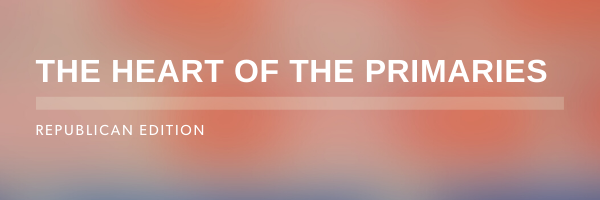Category: Newsletters
-
Economy and Society: Opposition to Federal Reserve nominee continues
Posted on
Economy and Society is Ballotpedia’s weekly review of the developments in corporate activism; corporate political engagement; and the Environmental, Social, and Corporate Governance (ESG) trends and events that characterize the growing intersection between business and politics. ESG Developments This Week In Washington, D.C. ESG-related opposition to Federal Reserve nominee continues Responses to President Biden’s nomination…
-
Ballotpedia’s Daily Brew: Delaware and New Jersey lift statewide school mask requirements
Posted on

Delaware and New Jersey governors lift statewide school mask requirements On Feb. 7, two governors—Delaware’s John Carney (D) and New Jersey’s Phil Murphy (D)—issued separate announcements lifting their states’ school mask requirements for the remainder of the 2021-2022 school year. Local authorities will now have the power to issue school mask requirements in both states.…
-
Robe & Gavel: Federal Judicial Vacancy Count released for February 1
Posted on
Welcome to the Feb. 7 edition of Robe & Gavel, Ballotpedia’s newsletter about the Supreme Court of the United States (SCOTUS) and other judicial happenings around the U.S. Much of the country may be experiencing a cold winter, but the pages inside our newsletter are hot this week with lively judicial activity, including a big…
-
694 candidates completed Ballotpedia’s Candidate Connection survey in 2021
Posted on
Welcome to the Monday, February 7, Brew. By: Samuel Wonacott Here’s what’s in store for you as you start your day: 694 candidates completed the Ballotpedia Candidate Connection survey in 2021 Race spotlight: Texas’ 15th Congressional District Republican primary A look at tomorrow’s elections 694 candidates completed Ballotpedia’s Candidate Connection survey in 2021 Since 2018,…
-
Petitions to recall Los Angeles County District Attorney George Gascón approved for circulation
Posted on
Our weekly summary of state & local news highlights a recall effort against LA County DA George Gascón and redistricting updates. Read all about it in this week’s edition of the State & Local Tap. All good things must come to an end. Ballotpedia will be retiring the State and Local Tap after the Feb.…
-
Hawaii, New York enact new congressional district maps; Pennsylvania Supreme Court assumes control over redistricting
Posted on
Our weekly summary of federal news highlights redistricting updates in Hawaii, New York, and Pennsylvania, and the FDA approving the Moderna COVID-19 vaccine. Read all about it in this week’s edition of the Federal Tap. All good things must come to an end. Ballotpedia will be retiring the Federal Tap after the Feb. 19th issue. …
-
ICYMI: Top stories of the week
Posted on
Five U.S. House elections this year feature two incumbents running in the same district All five districts are in states that have enacted new congressional district boundaries after the 2020 census, and all feature two candidates from the same party running against each other in the primary. Three of these districts have two Democratic incumbents…
-
D.C. Circuit Court of Appeals overturns two FLRA rulings
Posted on
Two three-judge panels of the U.S. Court of Appeals for the District of Columbia Circuit recently issued rulings affecting federal employee collective bargaining. Jan. 28 ruling on midterm bargaining On Jan. 28, a three-judge panel of the D.C. Circuit Court of Appeals overturned the Federal Labor Relations Authority’s (FLRA) 2020 decision that federal employers were…
-
Democratic and Republican party committees raised a combined $792 million in 2021
Posted on
Welcome to the Friday, February 4, Brew. By: Douglas Kronaizl Here’s what’s in store for you as you start your day: Democratic and Republican party committees raised a combined $792 million in 2021 Indiana’s partisan candidate filing deadline is today #FridayTrivia: How many U.S. House elections feature two incumbents running in the same district (so…
-
Heart of the Primaries 2022, Republicans-Issue 8
Posted on

February 3, 2022 In this issue: Three Texas State Senate candidates reject LIBRE endorsement and Wisconsin poised for expensive gubernatorial primary Three Texas State Senate candidates turn down LIBRE endorsement On Jan. 24, three Republican state Senate candidates in Texas rejected a joint endorsement from LIBRE Action—the political action committee affiliated with the LIBRE Initiative—and…

